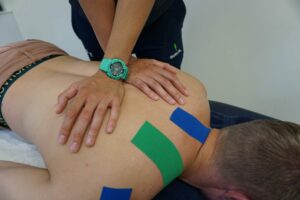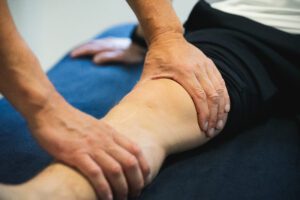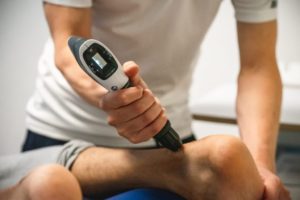Injury complaints that you may experience with an Achilles tendonitis
The injury complaints are pain and swelling in the Achilles tendon. This pain and swelling may occur at the attachment of the Achilles tendon or 2 to 7 cm above the attachment of the Achilles tendon. The first case is referred to as an insertion tendinopathy and the second case as a ''midportion'' tendinopathy.
The complaints often worsen during and after exercise. In addition, there is morning stiffness.
Guidelines for the best treatment for people with Achilles tendon pain
The guideline answers a number of questions:
Which people are more at risk of Achilles tendonopathy and how do you prevent this?
People who have previously had tendinopathy in the leg and who have started exercising or increasing their training load are more likely to develop this injury.
A logical tip to prevent this is therefore a gradual training build-up, taking into account the type, frequency, size and intensity of the training. In addition, it is recommended to do strength exercises for the calf muscles prior to the sports season. It is also wise to wear warm clothing during training in the winter season.
How is midportion Achilles tendinopathy diagnosed?
The diagnosis of midportion Achilles tendinopathy is made based on the presence of all of the following findings:
- Symptoms localized 2 to 7 cm above the Achilles tendon insertion.
- Painful Achilles tendon ''midportion'' in relation to load.
- Local swelling of the Achilles tendon ''midportion'' (this may be absent with short-term complaints).
- Pain when touching the Achilles tendon.
The same criteria apply for the diagnosis of an insertional tendinopathy, but at the attachment of the Achilles tendon.
What are the best treatments for Achilles tendinopathy?
There are three different treatment methods for these complaints.
Wait and see policy ''Wait and see''
For people who have had complaints for more than 6 months, it is expected that no or limited reduction in complaints will occur in the short term with this policy.
Conservative policy
Conservative policy or active treatment consists of:
- Explanation of the condition, explanation of the prognosis and pain education.
- Tax advice:
- Temporary cessation of provocative (sports) taxes;
- Temporarily replacing provocative sports with non-provocative sports.
- Gradual build-up of (sports) load;
- The use of a pain scale to monitor and adjust the degree of complaints related to (sports) strain.
- Build-up strength exercises of the calf muscles for at least 12 weeks.
If there is little effect from these treatment options, Extracorporeal Shockwave Therapy (ESWT) can be considered. This will always have to be combined with exercise therapy and tax advice.
Other passive treatments include: the use of a night splint, inlays, the use of collagen supplements, the use of ultrasound and friction massages, laser therapy and light therapy.
Injection treatments or dry needling can also be considered. However, the scientific evidence for the effectiveness of these treatments is weak.
Caution is advised when using Non-Steroidal Anti-Inflammatory Drugs (NSAIDs) and corticosteroid injections.
Operative policy
Surgery is not recommended and is only considered in people who do not recover after extensive conservative treatments. There is also a lot of risk involved in surgery.
How long does Achilles tendonitis last and can I get rid of it?
It is difficult to predict how long the complaints will last. This varies per individual. Fortunately, the majority of athletes with Achilles tendinopathy return to their sport.






